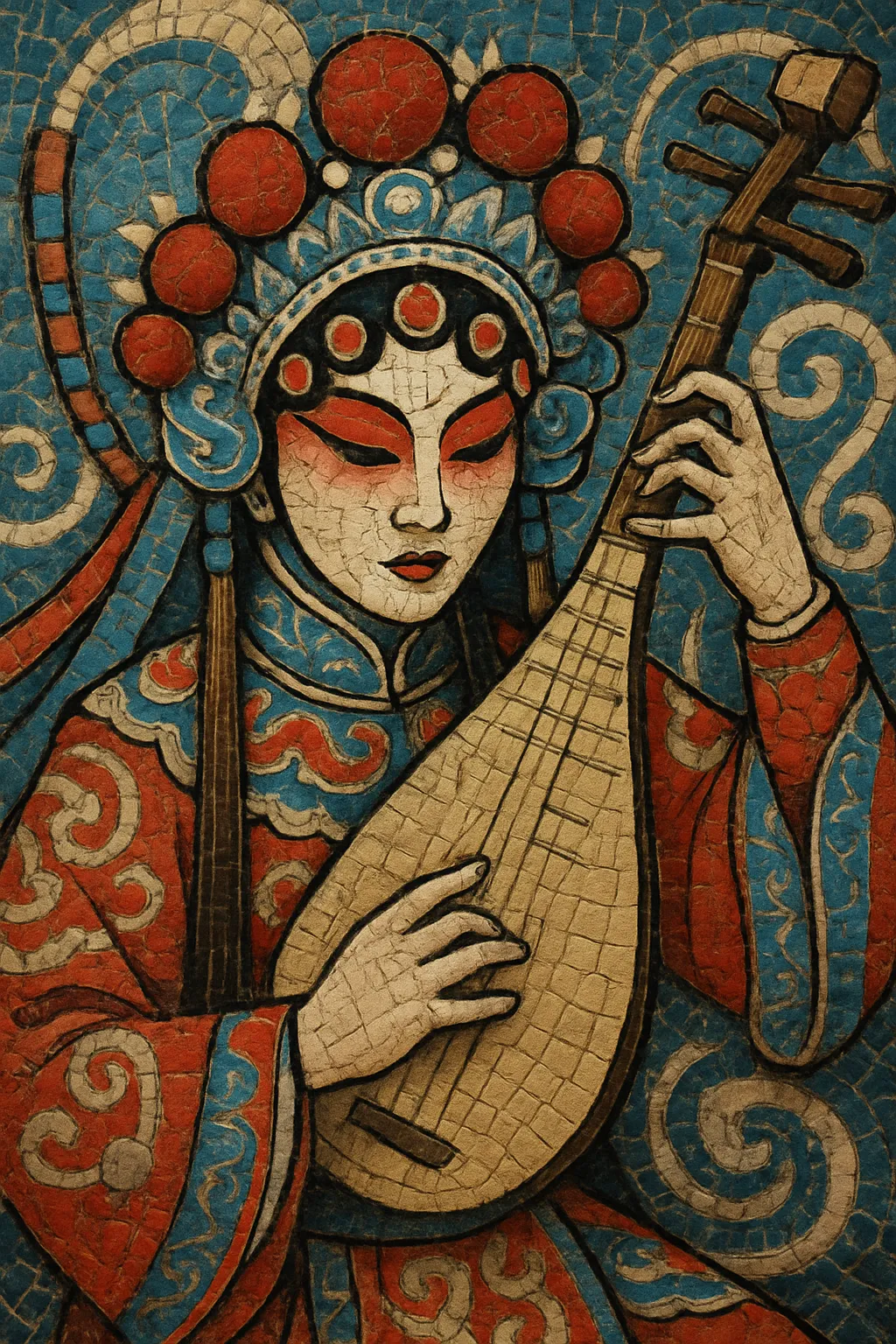Beijing opera (Jingju) is China’s most prominent xiqu (traditional Chinese opera) form, fusing sung arias, stylized speech, dance, mime, martial arts, and acrobatics into a highly codified theatrical language.
It features four main role types—sheng (male roles), dan (female roles), jing (painted-face roles), and chou (clown)—each with distinct vocal delivery, movement vocabulary, and costume/makeup conventions.
Musically, it is built on the shengqiang system, dominated by the xipi and erhuang melodic types, and the banqiang (aria) rhythm-frameworks such as yuanban, manban, and kuaiban. The ensemble is led by the jinghu (a high-pitched two-string fiddle) with yueqin, sanxian, and occasional suona, supported by a vibrant percussion battery centered on the bangu with gongs and cymbals.
Stories often draw from classical literature, history, and legend, presented through symbolic staging, minimal sets, and richly coded gesture, costuming, and coloration.
Beijing opera emerged in the 1790s when the “Four Great Anhui Troupes” arrived in Beijing during the Qianlong reign. Their Anhui styles blended with local Peking tunes, elements of Kunqu, and other regional operas to form a new metropolitan synthesis. By the early 19th century, the xipi and erhuang melodic systems and banqiang rhythmic frameworks had coalesced into a recognizable Jingju style.
Across the Qing dynasty, role categories, vocal techniques, and movement vocabularies were codified. Masters such as Cheng Changgeng and Tan Xinpei helped establish artistic standards, while instrument ensembles (wenchang strings/winds and wuchang percussion) solidified into the now-classic Jingju pit.
In the Republican era, Mei Lanfang and other luminaries modernized staging, expanded dramaturgy, and toured internationally (Japan, the Soviet Union, the United States), introducing Jingju aesthetics to global audiences and inspiring cross-cultural dialogue.
After 1949, state institutions professionalized training and preservation. During the Cultural Revolution (1966–1976), a limited repertoire of model operas (yangbanxi) adapted Jingju techniques to contemporary revolutionary narratives, reshaping subject matter and orchestration while maintaining core performance grammar.
Post-1978 reforms fostered restoration of classical repertoire and experimentation with new works, while conservatories refined pedagogy. In 2010, Beijing opera was inscribed on UNESCO’s Representative List of the Intangible Cultural Heritage of Humanity, reinforcing ongoing efforts in preservation, research, and international collaboration.


